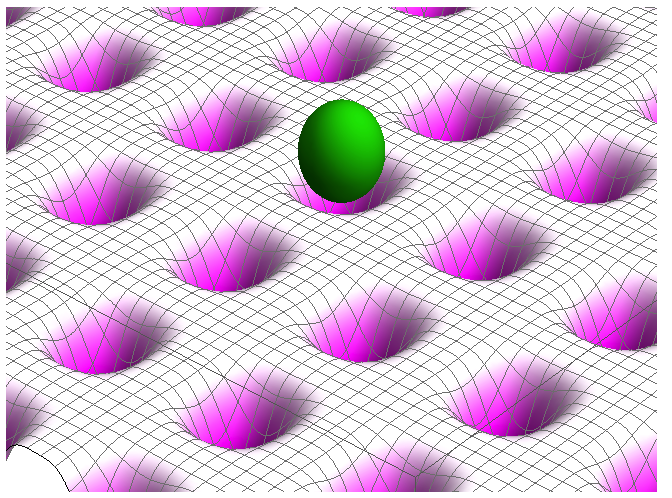I saw a beautiful figure illustrating the optical lattice clock, and would like to make a similar one.
This is the figure (taken from here)

Is it possible to make a similar one using Mathematica?
Here is my try:
Show[
Plot3D[0.05 (Cos[3 x] Cos[
3 y])^4, {x, -\[Pi], \[Pi]}, {y, -\[Pi], \[Pi]},
PlotRange -> {All, All, {-0.1, 0.1}}, PlotPoints -> 200, Mesh -> 60,
MeshStyle -> Gray,
ColorFunction -> (ColorData["GreenPinkTones"][0.5 #3 + 0.5] &)],
Graphics3D[{Darker[Green],
Scale[Sphere[{0, 0, -0.5}],
0.25 {\[Pi]/3, \[Pi]/3, .1}, {0, 0, 0}]}, Lighting -> "Neutral"],
ImageSize -> {651.1743427005708`, 484.8`}, Lighting -> "Neutral",
Method -> {"RotationControl" -> "Globe",
"RotationControl" -> "Globe"},
PlotRange -> {All, All, {-0.1`, 0.1`}},
PlotRangePadding -> {Automatic, Automatic, Automatic},
ViewAngle -> 0.13079882249358044`,
ViewCenter -> {{0.5`, 0.5`, 0.5`}, {0.5218420229698426`,
0.6543497570242808`}},
ViewPoint -> {-2.144844931539977`,
1.84186142553857`, -1.8593511526229505`},
ViewVertical -> {0.`, 0.`, -1.`}]




